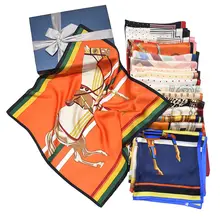Exploring the Versatility of Camouflage Webbing
Camouflage webbing is a multifaceted material that serves a multitude of sectors, embodying both strength and adaptability. This type of webbing is crafted into either flat strips or tubular forms, each catering to specific functional requirements. The application of camouflage webbing spans various domains, from military gear to outdoor adventure equipment, highlighting its importance in diverse operational contexts.
Types and Construction of Camouflage Webbing
The construction of camouflage webbing is pivotal to its functionality. Flat webbing, often utilized in the fabrication of luggage straps and safety harnesses, is known for its ease of integration with other materials. Tubular webbing, on the other hand, is recognized for its exceptional resistance to abrasion, making it a staple in industrial and sporting applications. The materials used in webbing, such as nylon, polyester, and polypropylene, are selected for their durability and performance under stress.
Applications Across Industries
The practicality of camouflage webbing is evident across various industries. In the realm of safety, it is instrumental in the creation of robust seatbelts and animal restraints. The outdoor sector values it for its use in adventure sports gear, where reliability is paramount. Its inherent resilience and flexibility make it an indispensable component in the manufacturing of specialized equipment for camping, hiking, and mountaineering.
Features and Advantages of Camouflage Webbing
Camouflage webbing is distinguished by its unique features, including resistance to wear and tear, and its ability to blend with natural environments. Its design caters to rigorous use, ensuring that it can withstand the challenges of both professional and recreational activities. The versatility of webbing is further enhanced by its availability in various widths and tensile strengths, allowing for tailored solutions to meet specific industry needs.
Material Selection and Sustainability
The choice of material for camouflage webbing not only affects its performance but also its environmental impact. Manufacturers are increasingly focusing on sustainable practices, opting for eco-friendly materials that do not compromise on strength or functionality. This commitment to sustainability ensures that the webbing remains a responsible choice for consumers and industries alike.
Choosing the Right Camouflage Webbing
Selecting the appropriate camouflage webbing requires consideration of its intended use. Factors such as load capacity, environmental resistance, and compatibility with other components are crucial in determining the most suitable type of webbing. Alibaba.com facilitates this selection process by offering a diverse range of webbing options, allowing buyers to find the ideal match for their specific application requirements.











































 浙公网安备 33010002000092号
浙公网安备 33010002000092号 浙B2-20120091-4
浙B2-20120091-4